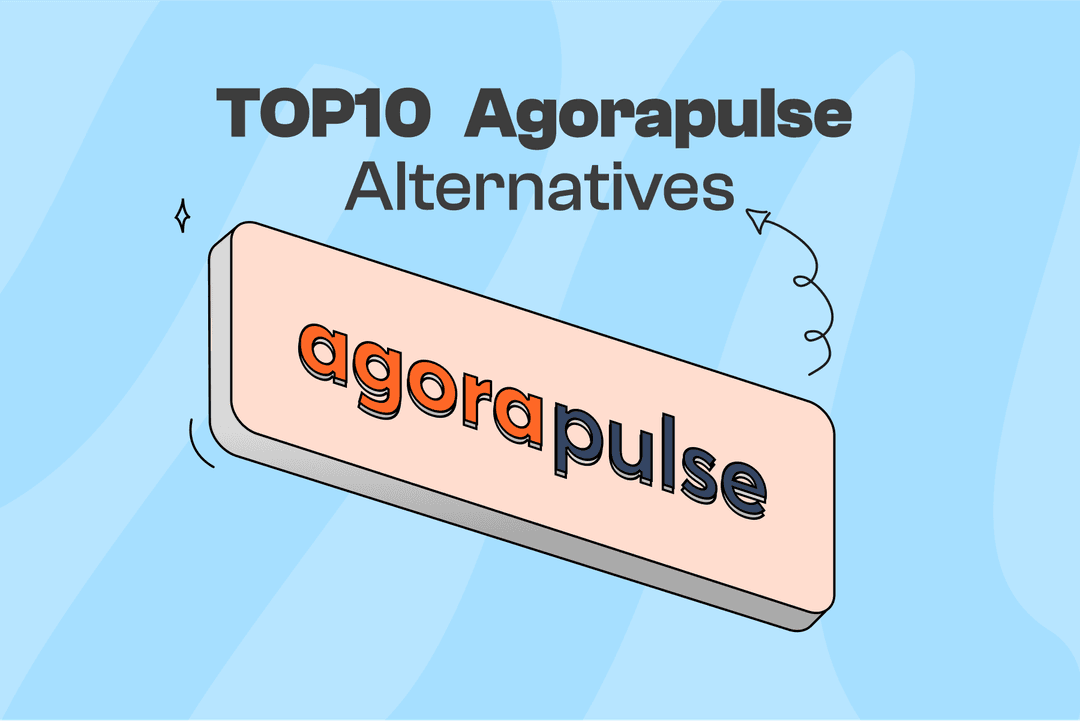Nailing your LinkedIn content dimensions isn’t just about following some technical rules; it’s about making that strong professional impression. When your images appear pixelated, when videos don’t load properly, and when carousels appear unprofessional, you run the risk of hurting your brand’s credibility on a platform built for professional networking.
The Connection Between Size and Success
Properly sized visuals are key to stopping the scroll. Properly formatted posts are more likely to be favored by the LinkedIn algorithm, which can lead to better reach. The precision that comes with it guarantees clear delivery of your message without having any awkward cropping or a loss in quality. Such posts are, for instance, 2x more likely to receive higher comment rates if they include custom images.
Why It’s Crucial for Your Brand
Of the over 900 million members on LinkedIn today, those businesses that use correct specifications really stand out. When visuals are properly sized, they catch attention more successfully, which, in turn, spurs engagement and stronger professional connections.
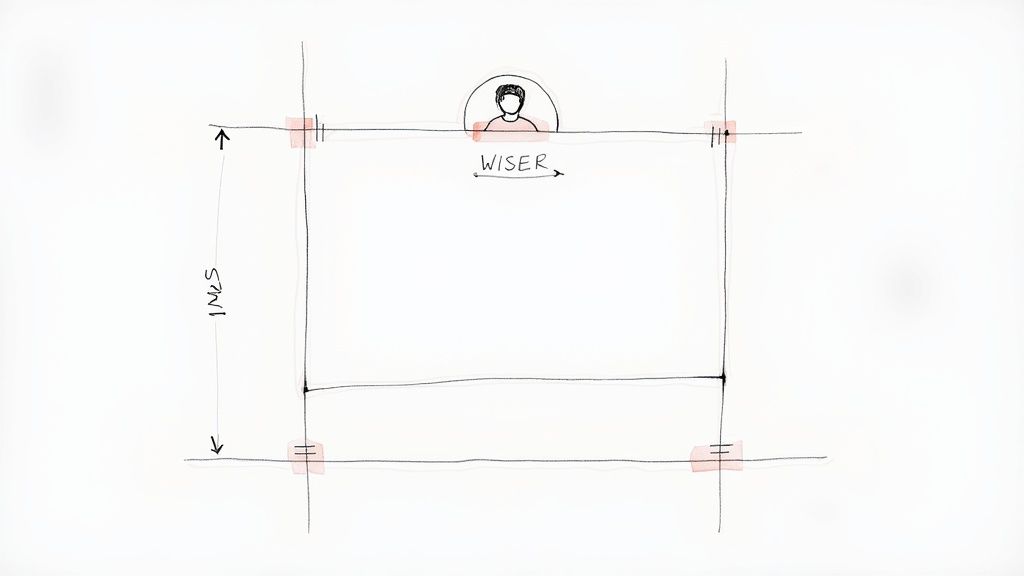
Single Image Posts: Perfect Dimensions and Best Practices
A single image post is a foundation of visual communication. The right LinkedIn post dimensions are important to make sure your content looks professional and isn’t awkwardly cropped on desktop or mobile.
Recommended Dimensions and File Specifications
The image dimension is 1200 x 627 pixels in size (1.91:1). Please keep the images under 5MB for faster load times.
LinkedIn Image Post Dimension Requirements
| Format Type | Dimensions (pixels) | Maximum File Size | Best Use Case | Aspect Ratio |
|---|---|---|---|---|
| Single Image (Recommended) | 1200 x 627 | 5MB | Standard image posts, announcements, and sharing links. | 1.91:1 |
| Square Image | 1080 x 1080 | 5MB | Mobile-first content, infographics, and bold statements. | 1:1 |
| Vertical Image | 1080 x 1350 | 5MB | Showcasing detailed visuals, infographics, or mobile-optimized content. | 4:5 |
The table below shows the recommended landscape format, together with square and vertical options.
Below is an infographic that puts the dimensions for a single image post in perspective against some other common LinkedIn visuals, including company page banners and link thumbnails.
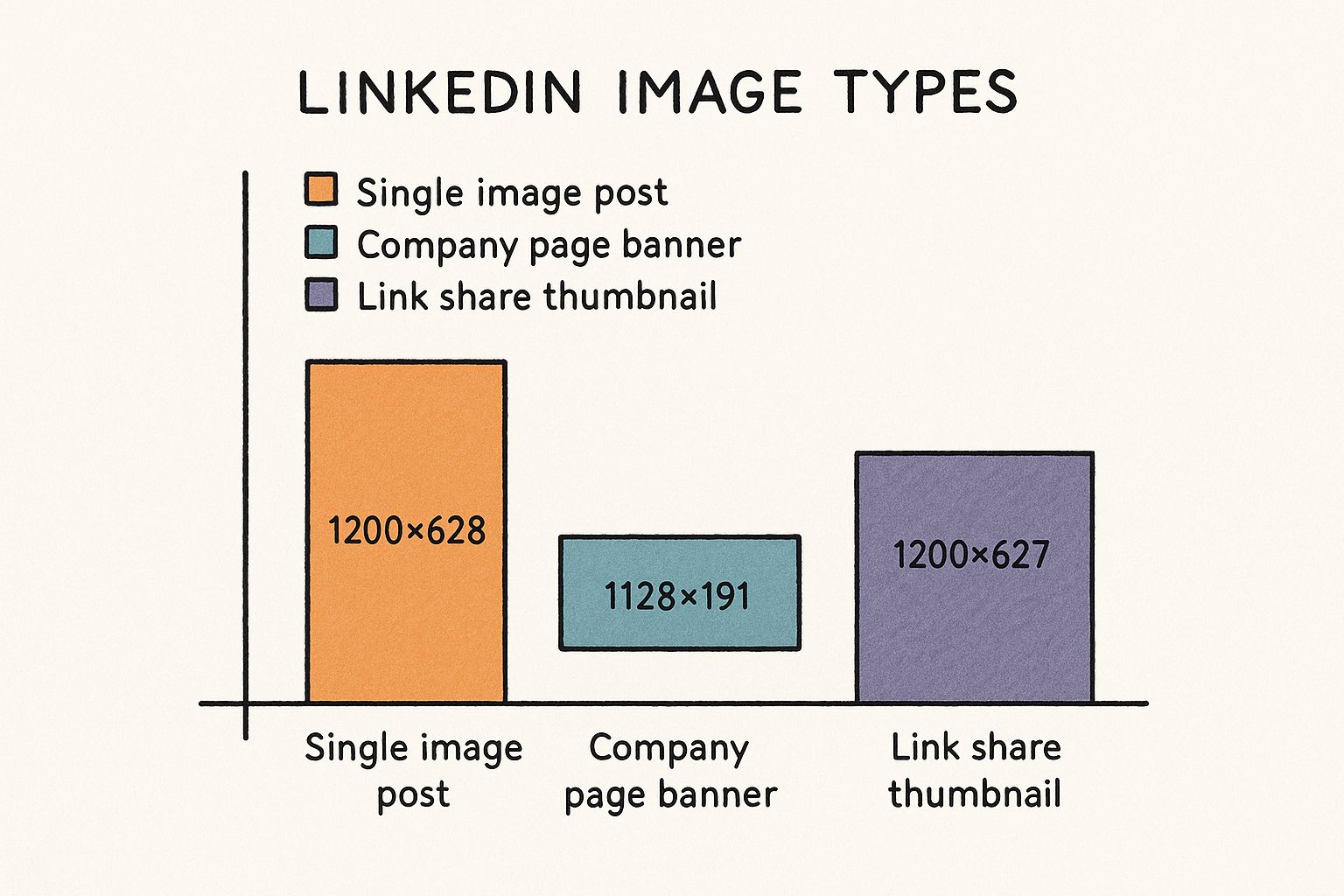
As the chart shows, single images and link thumbnails have virtually identical landscape dimensions. The consistency in dimensions helps with a consistent visual experience when you share content.
Strategic Use of Image Formats
Square images often work well on mobile since they take up more screen space. Vertical images are great for graphics and all types of detailed visuals. Testing different formats can have a significant effect on engagement.
LinkedIn Link Thumbnail Dimensions
Whenever sharing a link, LinkedIn automatically generates a preview as a thumbnail. To ensure that the image is displayed correctly, set your website OG image to 1200 x 627 pixels. It reduces poor cropping and increases click-through rates for blog posts, articles, and landing pages.
Video Post Specifications: Formats, Sizes, and Technical Requirements
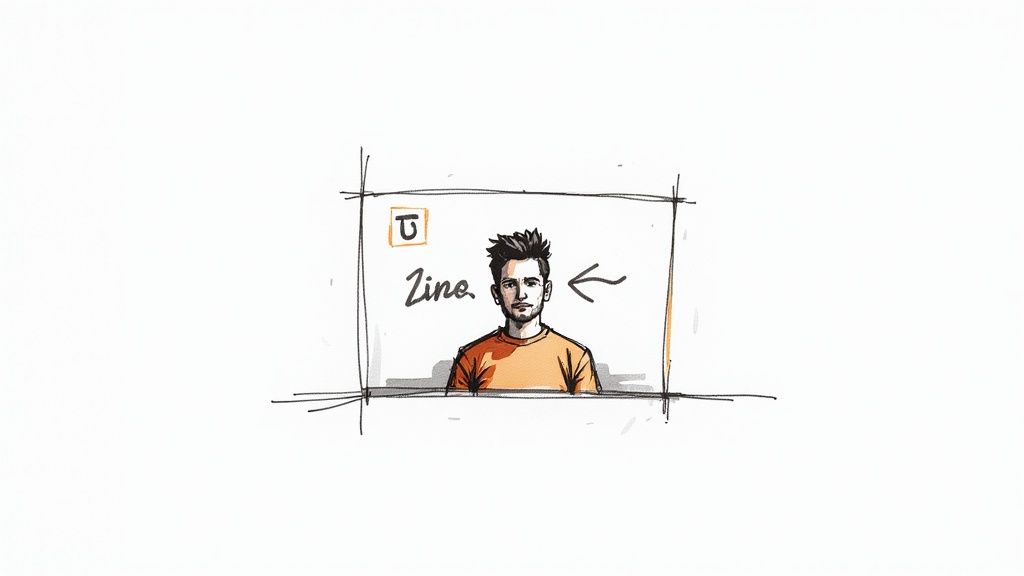
The content of a video involves meticulous attention to detail to represent your brand in a professional manner.
Core Video Requirements
Use 1080 x 1080 pixels for square videos or 1920 x 1080 pixels for landscape. The minimum resolution recommended by LinkedIn is 720p. Maximum file size: 5GB.
Videos can be up to 15 minutes from desktop and 10 minutes from mobile.
For more detailed specifications, you can find additional information about LinkedIn video sizes on sendible.com.
File Formats and Compression
Supported formats include ASF, FLV, MPEG-1, MPEG-4, MKV, WebM, H264/AVC, MP4, VP8, VP9, WMV2, and WMV3.
Unsupported formats like AVI, QuickTime, and MOV may need conversion.
Balancing file size with quality is essential to avoid slow loading times.
Safe Text Zones for Images and Videos
Even when dimensions are spot on, LinkedIn can still cut off the edges of your visuals. Keep your important text, logos, or CTAs inside the center 80 percent of your design. This prevents accidental cropping on mobile screens and keeps your main message visible.
Carousel Posts and Multi-Image Content: Advanced Formatting Guide
Carousel posts take a single post and turn it into a multi-slide presentation. The recommended dimensions are 1080 × 1080 or 1080 × 1350. All slides must remain consistent in their size.
Design and Flow for Maximum Impact
A successful carousel is way more than a random set of images; it is a carefully structured trip for the viewer. Think of it as a mini-presentation designed to capture and hold attention.
- Strategic Structure: The first slide is the hook. It needs to be compelling, and through it, the value of swiping through the rest of the content should shine bright.
- Visual Consistency: Maintain a consistent brand throughout all the slides. This involves using the same typefaces, color scheme, and positioning of the logo for a professional look that is recognizable.
- Narrative Flow: Each slide should logically flow from the previous one. Whether or not you’re telling a story or explaining a complex topic, break it down into easy-to-follow, digestible pieces.
- Clear Call to Action: The last slide should call for an action. You can ask a question and initiate the discussion, or guide a viewer to find a link in the comments for further information.
A marketing agency might, for instance, use a carousel to present a case study about a project. The first slide would introduce the challenge of the client, while the succeeding slides outline the strategy and execution; the final slides then show the successful results, culminating in a CTA like “Learn more about our services.”
LinkedIn Document Post Dimensions (PDFs, Guides, Whitepapers)
Document posts are one of the strongest performing formats on LinkedIn. For posting PDFs, use 1080 x 1080 pixels per page or a vertical 4:5 ratio. On LinkedIn, maximum PDFs are up to 100 pages and 100 MB. Design the first page like a book cover, with a bold headline to maximize swipe-through rates.
Profile and Company Page Visual Specifications
Your LinkedIn profile and company page visuals are your digital handshake. They are the first impression for every professional interaction that will ever take place there. Following the proper dimension guidelines is critical to establishing credibility and strong brand recognition. Consider these specifications to be not just technical requirements but rather strategic assets which build up your professional presence.
These visuals set a professional tone for every post you publish, which you can manage more easily when you learn how to schedule social media posts using a reliable LinkedIn post scheduler.
Personal Profile and Company Page Banners
Recommended size is 1584 x 396 pixels (4:1). Keep the important elements in the centre because profile photos cover parts of the banner on mobiles.
Strong visuals can increase views on a profile by up to 30 percent.
Profile Photos and Company Logos
Use 400 x 400 pixels for a sharp, businesslike picture. LinkedIn shows images in a square format as circles, so center the visuals.
LinkedIn Event Cover Photo Dimensions
For LinkedIn Events, the recommended banner size is 1600 x 900 pixels (16:9). Keep text and logos centered, so they do not get cropped on mobile.
LinkedIn Article Header Image Dimensions
The size of an ideal header image is 2000 x 600 pixels for long-form articles. This wide banner format sets a strong first impression and improves click-through from the feed.
Mobile Optimization and Cross-Device Compatibility
More than 60 percent of LinkedIn traffic comes from mobile devices.
Designing for the Mobile Feed
Square images are often the most versatile for mobile. Always double-check readability, cropping and load time.
Testing Across Platforms
Preview your content on multiple devices to ensure clarity and proper cropping. You can discover more insights about social media size guides on figma.com to further refine your approach.
Accessibility Best Practices (Alt Text & Subtitles)
Add alt text to your images for better accessibility and search engine optimization. For video content, always make sure to include captions; a majority of LinkedIn videos are viewed without sound. These will enhance the user experience and reach a wider audience.
Quick Reference Guide and Implementation Checklist
This quick reference guide brings all the key specifications together in one convenient place to help make your content creation process smoother. It will help you avoid the most common errors during file upload and make sure your content appears professional. Getting the right LinkedIn post dimensions is just the first step, while a fail-proof workflow guarantees that every post-sometimes just a single image, sometimes a carousel-meets the requirements of the platform and helps achieve your goals.
Actionable Implementation Checklist
Use this checklist to uphold the highest standards and avoid sizing pitfalls before they occur. Integrating these steps into your workflow will help save your time and further improve how well your content is performing.
- Verify Dimensions Before Uploading: Always confirm your image or video matches the recommended size for its format. For example, use 1200 x 627 pixels for images in shared link posts.
- Check File Size: Make sure your image is under 5MB and that videos are within LinkedIn’s limits to prevent upload failures.
- Preview on Mobile: Before you hit “post,” check how your content looks on a mobile device. This ensures that no important text or visual elements get cropped out on smaller screens.
- Maintain Aspect Ratio: For a clean and professional look, keep aspect ratios consistent across related visuals. For instance, all slides in a carousel post should use a 1:1 (square) ratio for a smooth scrolling experience.
Here is an example from the LinkedIn Help Center that shows how different image types appear on a profile.
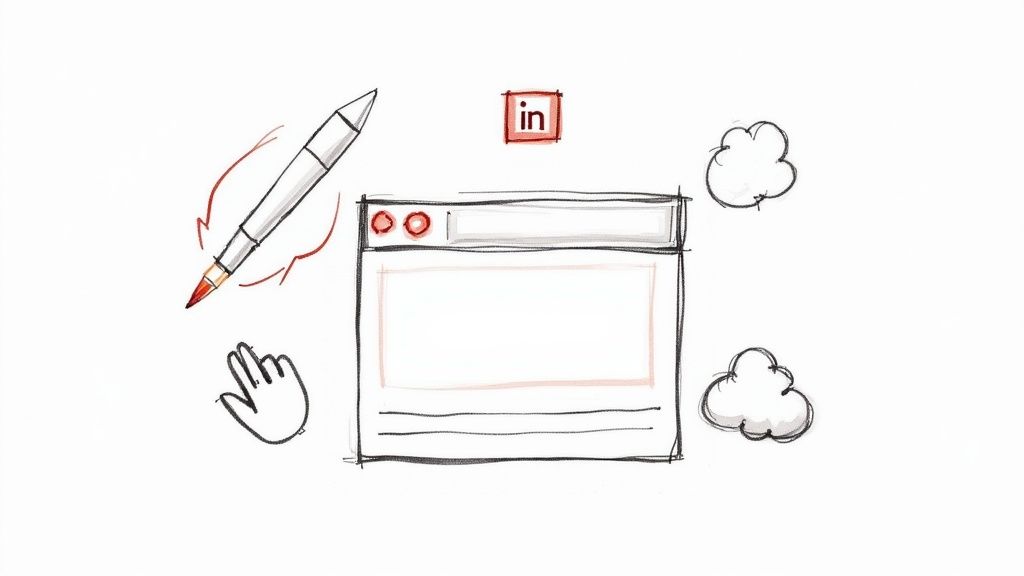
The screenshot shows how your profile photo can cover parts of your background banner, which underlines the need for careful placement of key design elements. Following these guidelines is a fundamental part of an effective social media marketing plan.
Ready to simplify your entire content workflow? Postiz helps you schedule, design, and analyze your LinkedIn content in one platform. Start streamlining your strategy with Postiz today!




